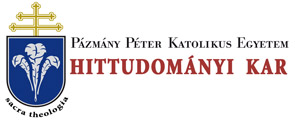Folia Theologica 22. (2011)
Szuromi Szabolcs Anzelm O.Praem.: Medieval Canonical Sources and Categories of Singular Administrative Acts
116 Anzelm Sz. SZUROMI communicatis vitandis, de reconciliatione lapsorum et de fontibus iuris ecclesiastici, and De prudentia dispensatione ecclesiasticarum sanctionum; and further to the work of Alger of Liège (1055-1131) De misericordia et iusti- tia.50 Master Gratianus was able to apply these principles consistently in his Concordia discordantium canonum.5' Thus, there appeared two possible principles for interpretation regarding the singular decrees issued by the Pope. According to the first, the given decree is an addition to the existing legal norm (or norms) (declaratio extensiva legis), according to their contents, given with supreme legislative power. From this principle, it follows that a singular decision is to be interpreted as relating only to the case that caused its issuance, if it is explicitly bound to the circumstances and specific internal content of the given case. The second possibility was discerned by the science of canon law as a singular decision that tried to establish the interpretation or explanation of only one such legal norm that had been in effect (declaratio comprehensiva legis). Apparently, with this clear differentiation, singular decision received its present-day meaning, that is, it cannot be considered as a legal norm, for in both cases it directly depends on such a legal norm that has been made earlier and has been in effect. II. Precept (Praeceptum) The word praeceptum is derived from the verb praecipere, to command, to dispose. In Roman Law, it was regarded as a new type of the decrees of the imperial time, that is, the constitutiones.52 In medieval canonical usage, praeceptum traditionally had meanings. First, in cases, when a certain act was against a law in effect. It is general knowledge that a legal norm by definition is generally always binding with respect to its subjects while in effect. This is especially true in canon law, each of the laws of which has a direct or indirect link with divine law, and, therefore, since antiquity it was understood that once a determined legal norm took effect, then it could not be overruled. Specimens that exemplify this understanding are such early medieval canon law collections as the Collectio Dionysiana, which origi50 Kretzschmar, R., Alger von Lüttichs Traktat „De misericordia et iustitia” (Quellen und Forschungen zum Recht im Mittelalter 2), Sigmaringen 1985. 51 Viejo-Ximénez, J. M., La composición del Decreto de Graciano, in lus Canonicum XLV/90 (2005) 431-485. 52 Földi, A. - Hamza, G., A római jog története és institúciói, 93.
